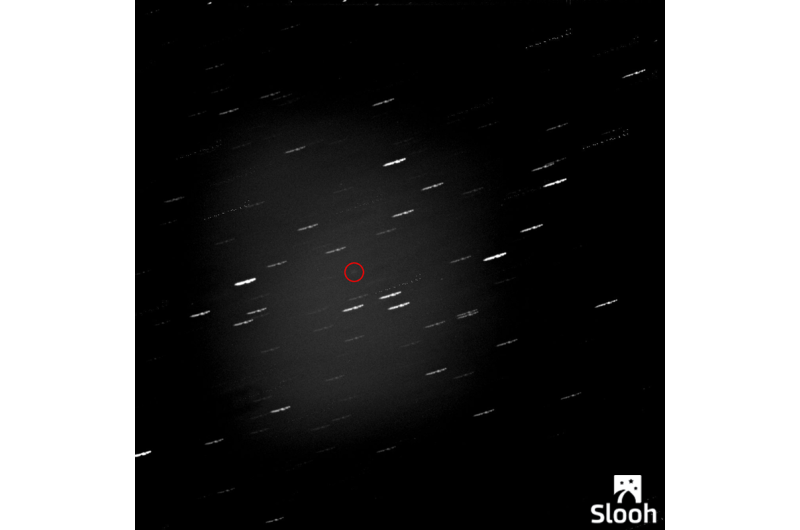Astronomers image newly discovered comet

Earlier this week, Slooh member Bernd L眉tkenh枚ner and Slooh astronomer Paul Cox were able to image the newly discovered Comet C/2016 R3 (Borisov) under extraordinary conditions. The comet had been close to the Sun since its discovery on September 11, 2016, by Gennady Borisov, making it extremely difficult to observe.
It had already fallen out of reach of other telescopes around the world by September 16th, but L眉tkenh枚ner and Cox managed to image it on September 20th using Slooh's robotic Half Metre telescope at their flagship observatory at the Institute of Astrophysics of the Canary Islands.
Cox said, "We usually observe objects when they're high in the sky, so we're peering through as little of our atmosphere as possible. But in this case, the comet was only observable in the last 30-minutes before dawn, when it was only 5掳 above the horizon in a rapidly brightening sky. Given the factors stacked against us, we were amazed when we managed to pinpoint the faint and diffuse fuzz ball in our images."
"We may have obtained the last observations of this comet for the next 100 or even 100,000 years," said L眉tkenh枚ner. The reason for that huge timespan is that the orbit of this comet hasn't been fixed with any certainty. Added Cox, "Our latest observations will help determine the orbit of the comet with greater certainty."
The comet is set to make its closest approach to the Sun (perihelion) on October 12, 2016. Says Cox, "We don't even know if the comet will survive its journey around the Sun, but if it does, it will remain an extremely difficult object to image because of its proximity to the Sun from Earth's perspective鈥攂ut we'll still give it a try!"
Astronomers require further observations of the comet to confirm whether this is a new discovery or a recovery of a comet discovered in 1915, Comet C/1915 R1 (Mellish).
Provided by Slooh



















